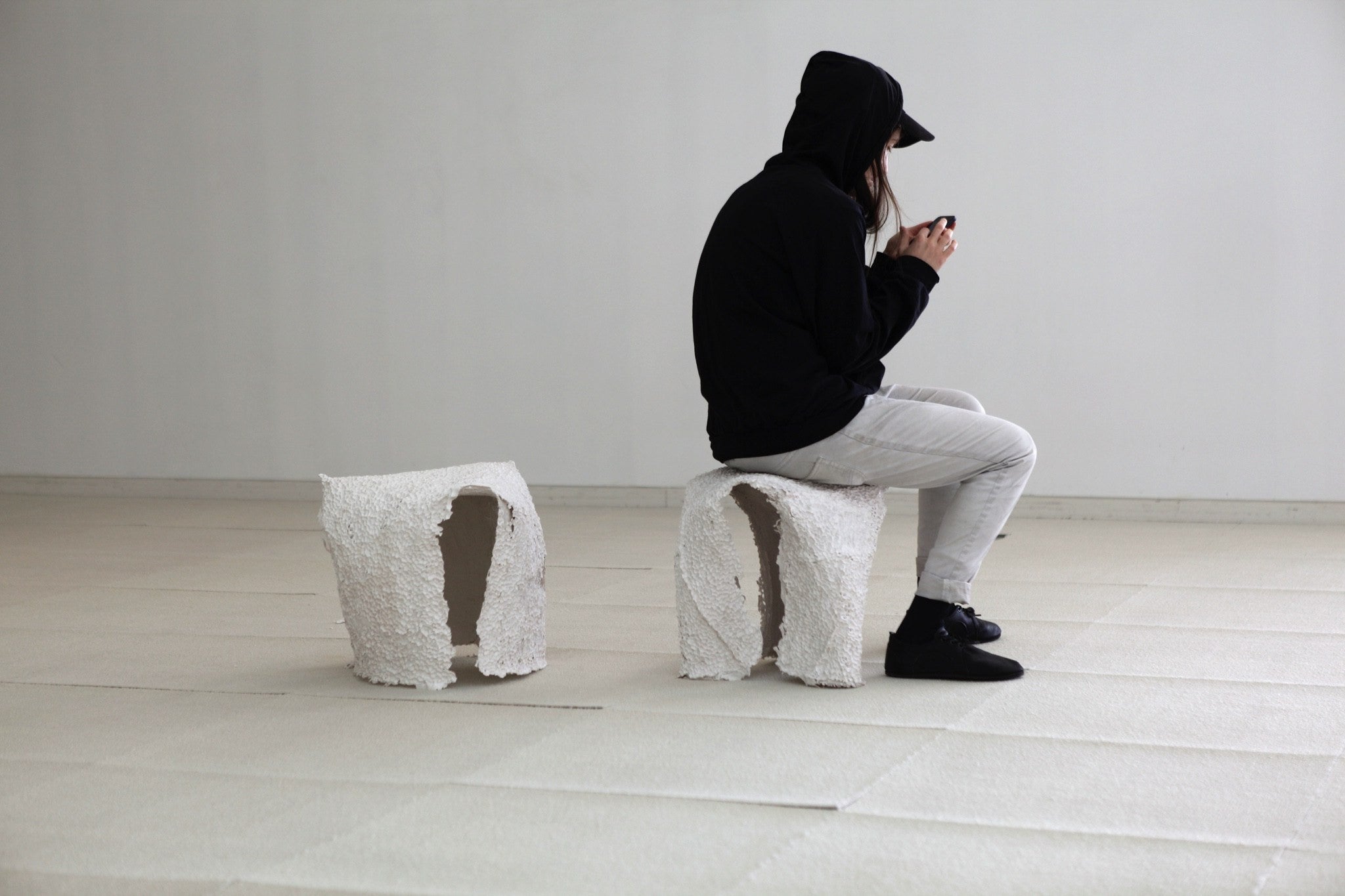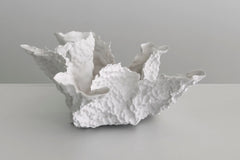

Particle jamming is amazing. Take a balloon, fill it with some granular media like uncooked rice or beans and suck the air out with a vacuum. The balloon stiffens and holds its shape. The stiffness of the bladder is easy to manipulate and quickly changes from a completely floppy state to something as hard as a rock. The higher the vacuum, the stiffer the jamming bladder becomes. Of course, the granular media that you put inside the bladder also affects its performance. Fill a balloon with jelly and it’ll remain relatively malleable even with a high pressure vacuum. On the other hand, if it’s filled with glass marbles, you’ll won’t be able to shift its shape whatsoever once a high vacuum is pulled. That’s the magic of particle jamming.

With that little piece of magic, we developed a process to create custom molds for thin shell casting using various granular media. We worked with two primary variables. The granular media and the shape of the bladder. The thin shell casts take on the form of the shaped bladder as well as the granular media, crystallizing the intricate texture created by the relatively coarse grain. Choice of granular media affects the stiffness of the bladder, the stiffness of the cast, and the texture of the cast. Glass marbles casts have a stiff structure with a hexagonal pattern of craters while rice creates a fragile structure with an irregular speckled texture.

Unlike traditional hard molds, casting into a jammed mold can have undercuts since the bladder returns to a soft state when air is supplied back into the bladder. With this small advantage, jamming bladders can be freely shaped with folds and undercuts that are difficult to achieve with hard molds.

The following are the steps to our process:
Build a custom latex bladder
Fill the bladder with coarse granular media
Pull a vacuum at 15” Hg
Shape the bladder by hand
Increasing the vacuum to 20-28” Hg
Cast Hydrostone or Hydrocal FGR-95 to coat the surface of the hardened form
Rotate the mold to evenly coat the surface until the material hardens
Wait for the cast material to harden
Let the air back into the bladder
Remove the cast

For larger casts that require reinforcement, we add layers of burlap impregnated with Hydrocal to take the structural load.
Materials: Vacuum Pump, PVC Tubing, Latex Balloons, Hydrostone, Hydrocal FGR-95, Glass Marbles, Pinto Beans, Rice, Garbanzo Beans, Spiral Pasta, Rope, Burlap.




To assist the thin shell casting process, we built a rotation sequencer to spin the jamming bladders. The vacuum airway is piped through the spinning shaft, so continuous rotation in either direction is possible without tangling tubes. Its motion is programmed by manually rotating the wheel while in recording mode, then in playback mode, the recorded motion is repeated indefinitely. The idea was to direct the uncured plaster to settle in some areas by inserting pauses while rotating the piece to coat the rest of the mold evenly.

Roto-Jam Machine: Aluminum Tubing, Custom Motor Driver, DC Motor, Resistive Position Sensor, Push Button, Custom Gears, Bearings, Shaft Collars, Tube Fittings.

More videos of our process: https://vimeo.com/album/2651275
And photos of our process: http://flic.kr/s/aHsjKL1UHS
BOM, SolidWorks, Eagle, Arduino Files: https://github.com/cheewee2000/roto-jam
Roto-Jam V1 was built at MIT Media Lab in a class called How to Make (almost) Anything and Harvard GSD in a class called Expanded Mechanisms / Empirical Materialisms.
Both halves of CW&T are Research Assistants in the Playful Systems Group at Media Lab (EGD 2015).













